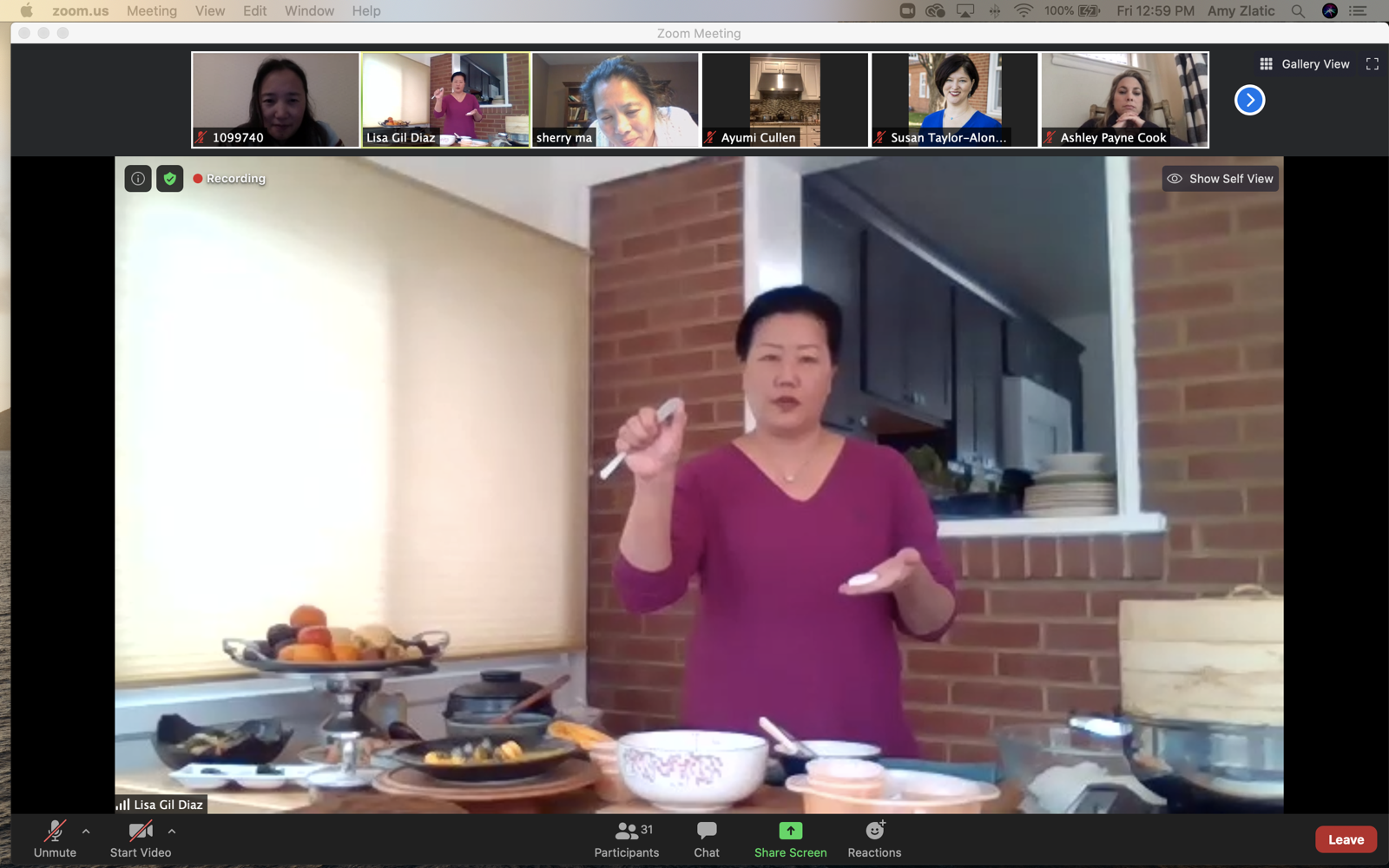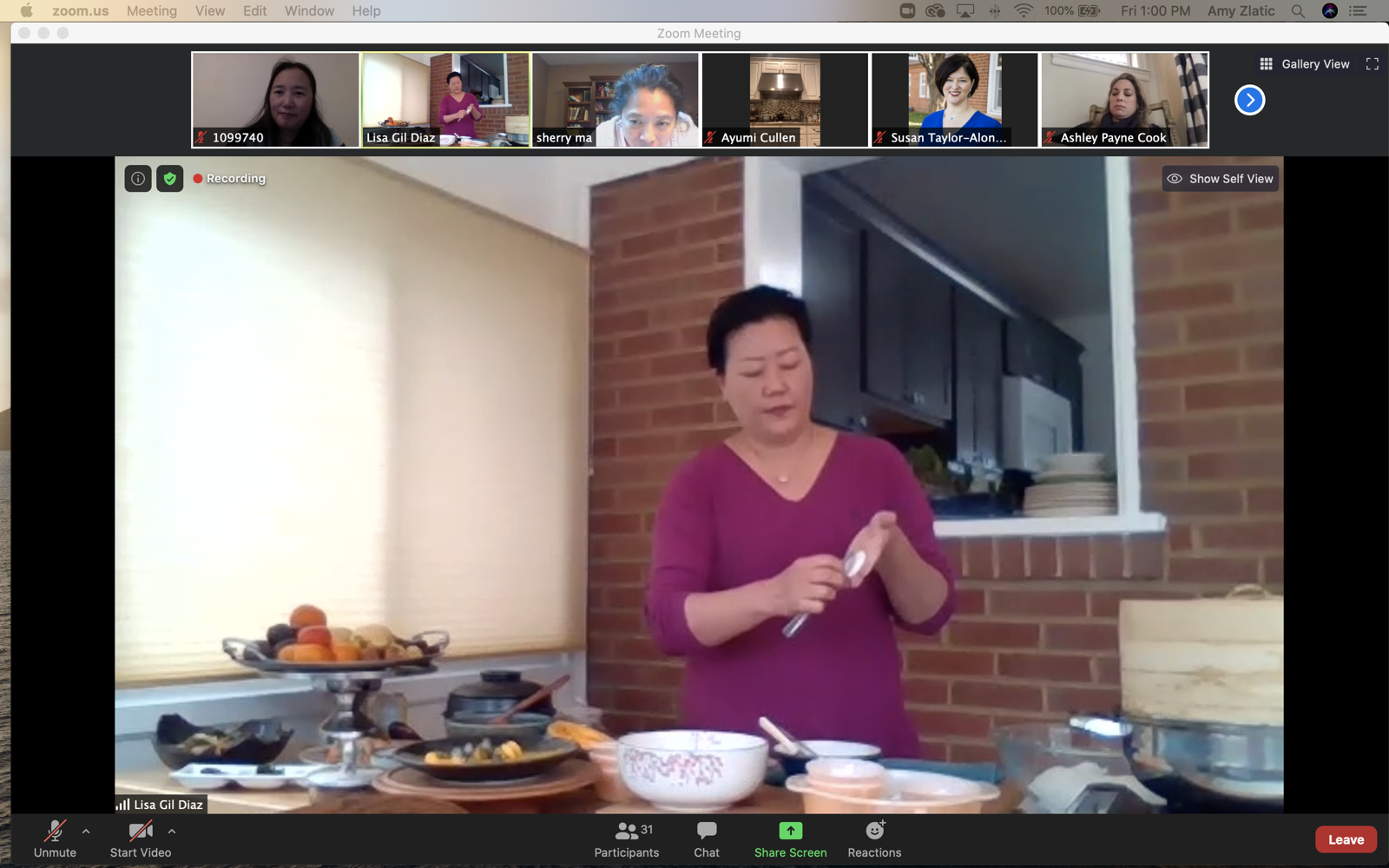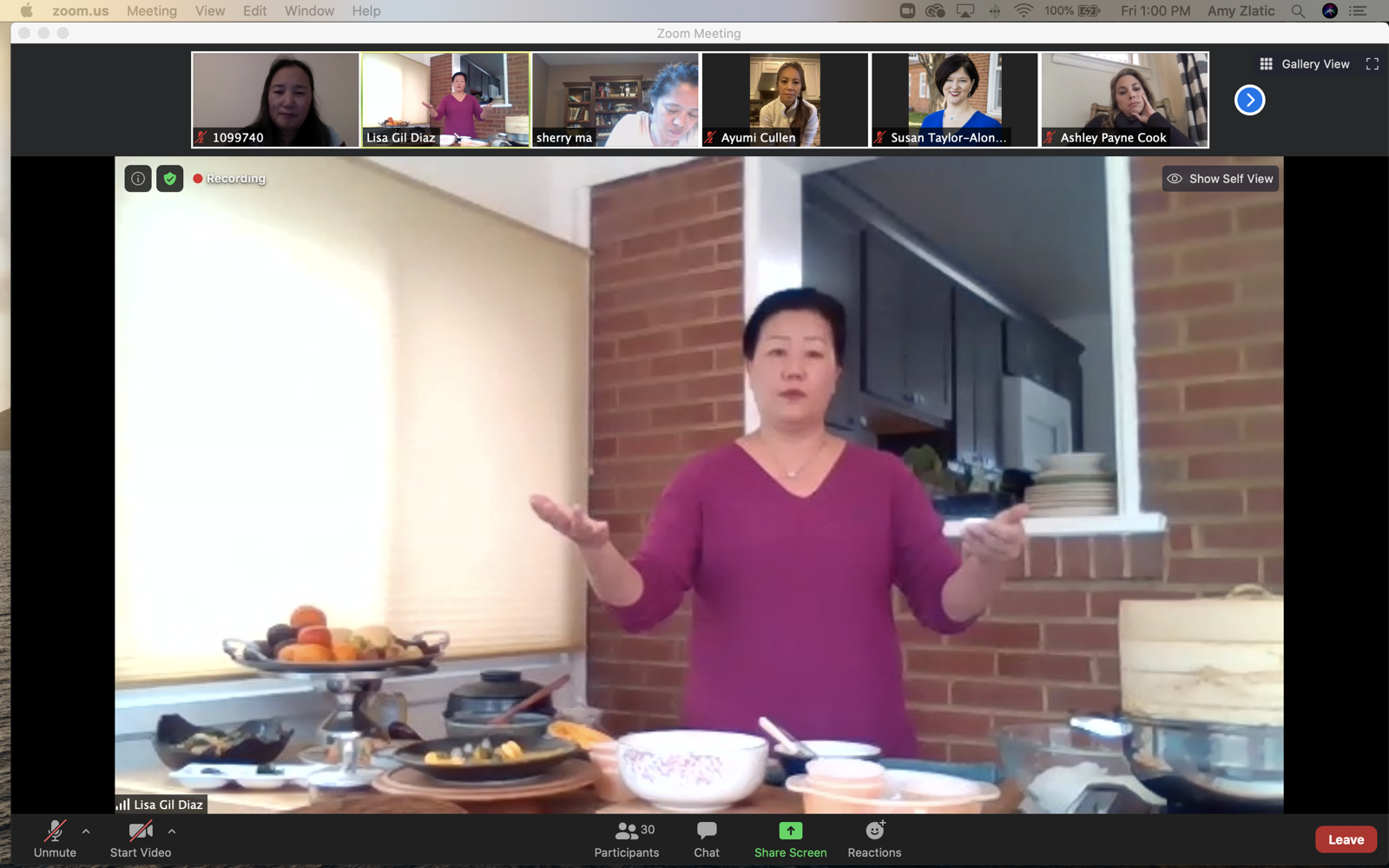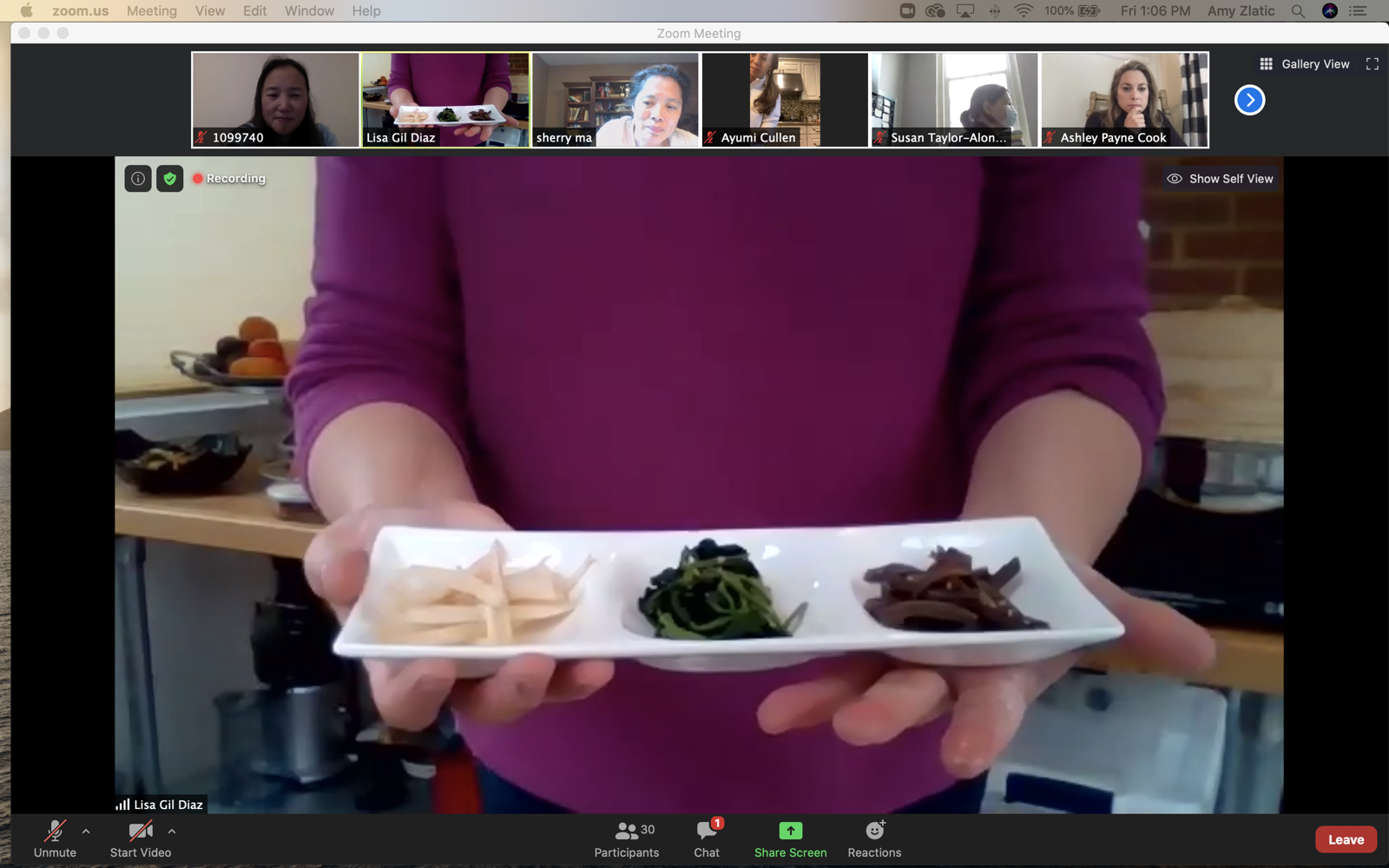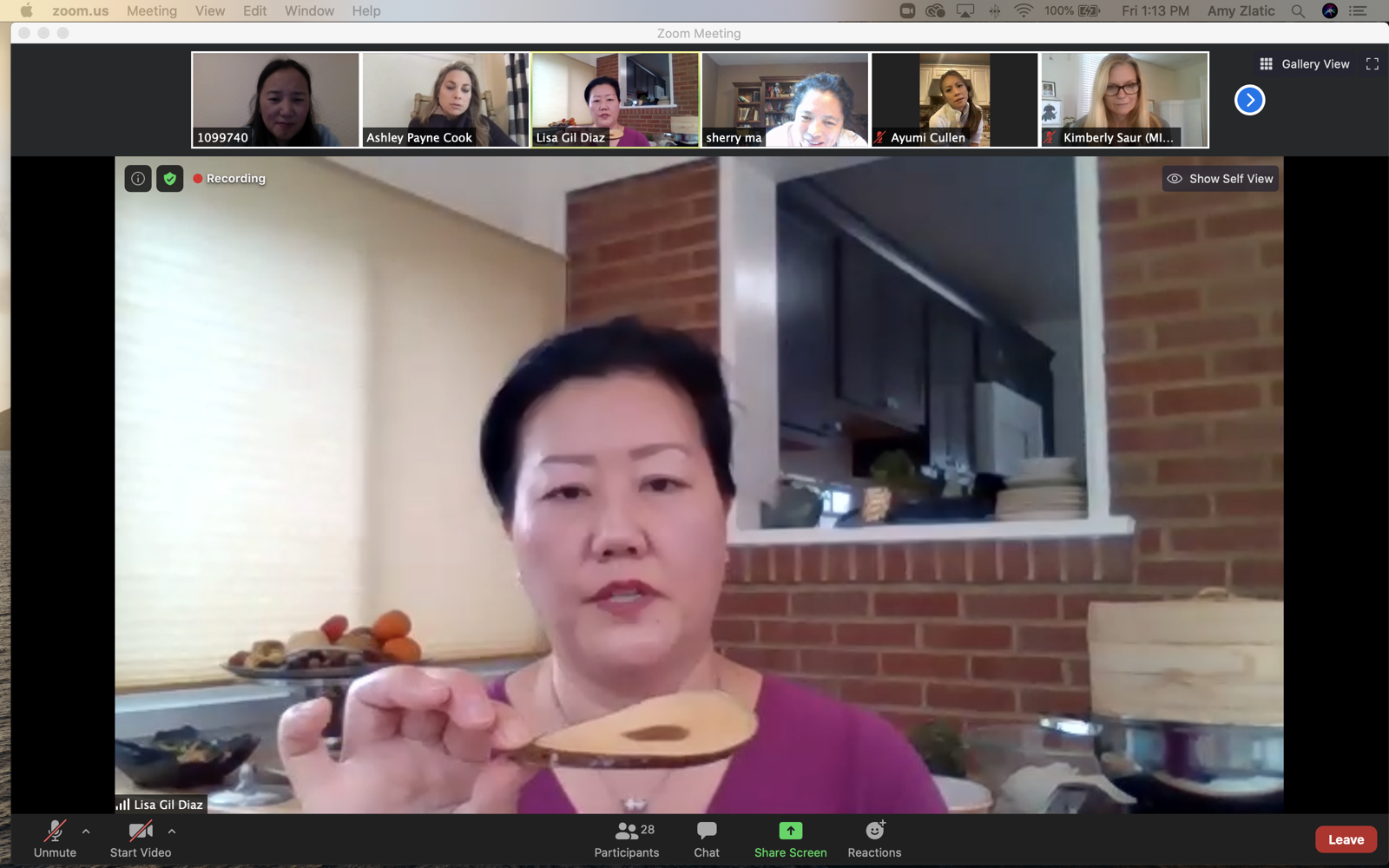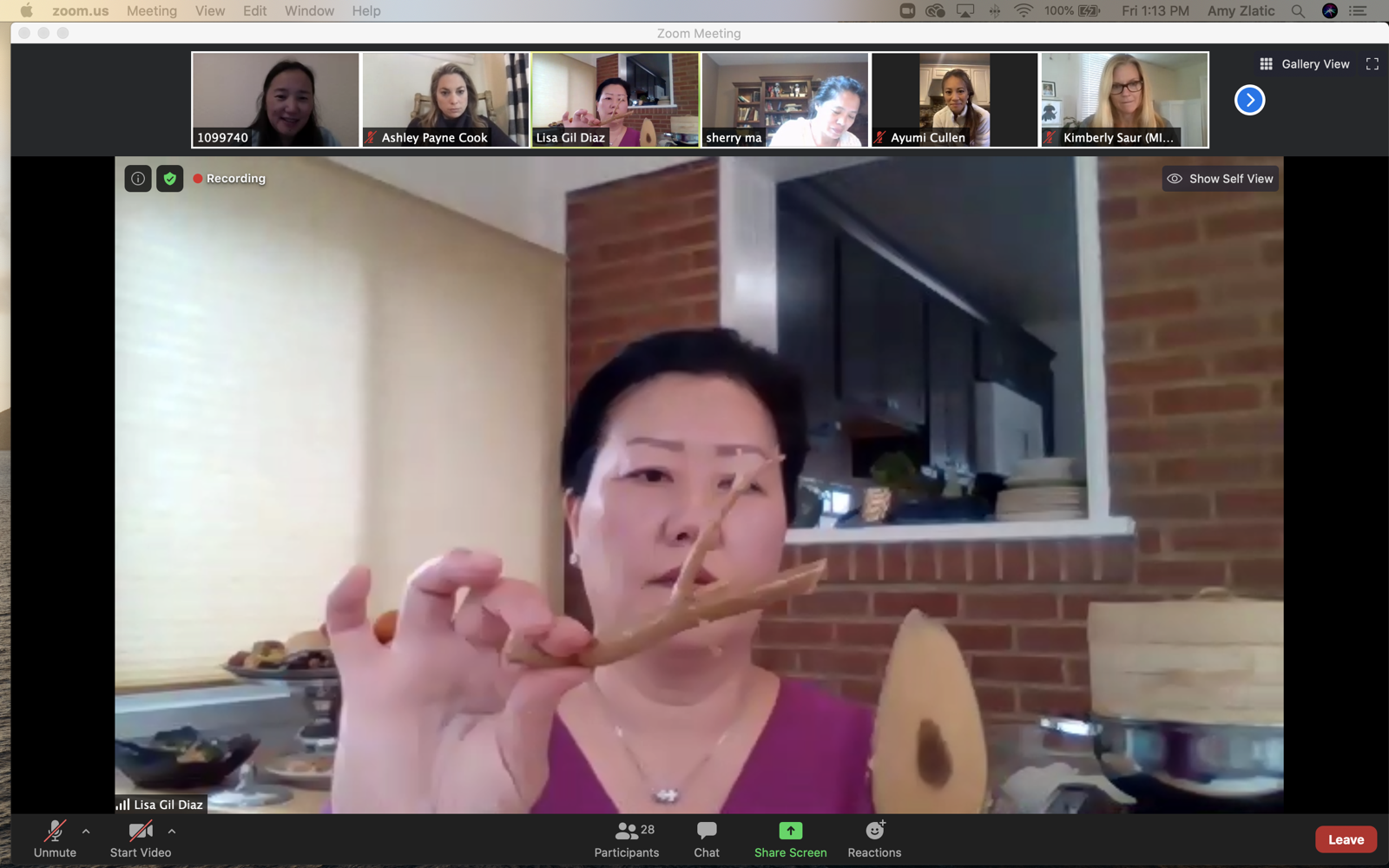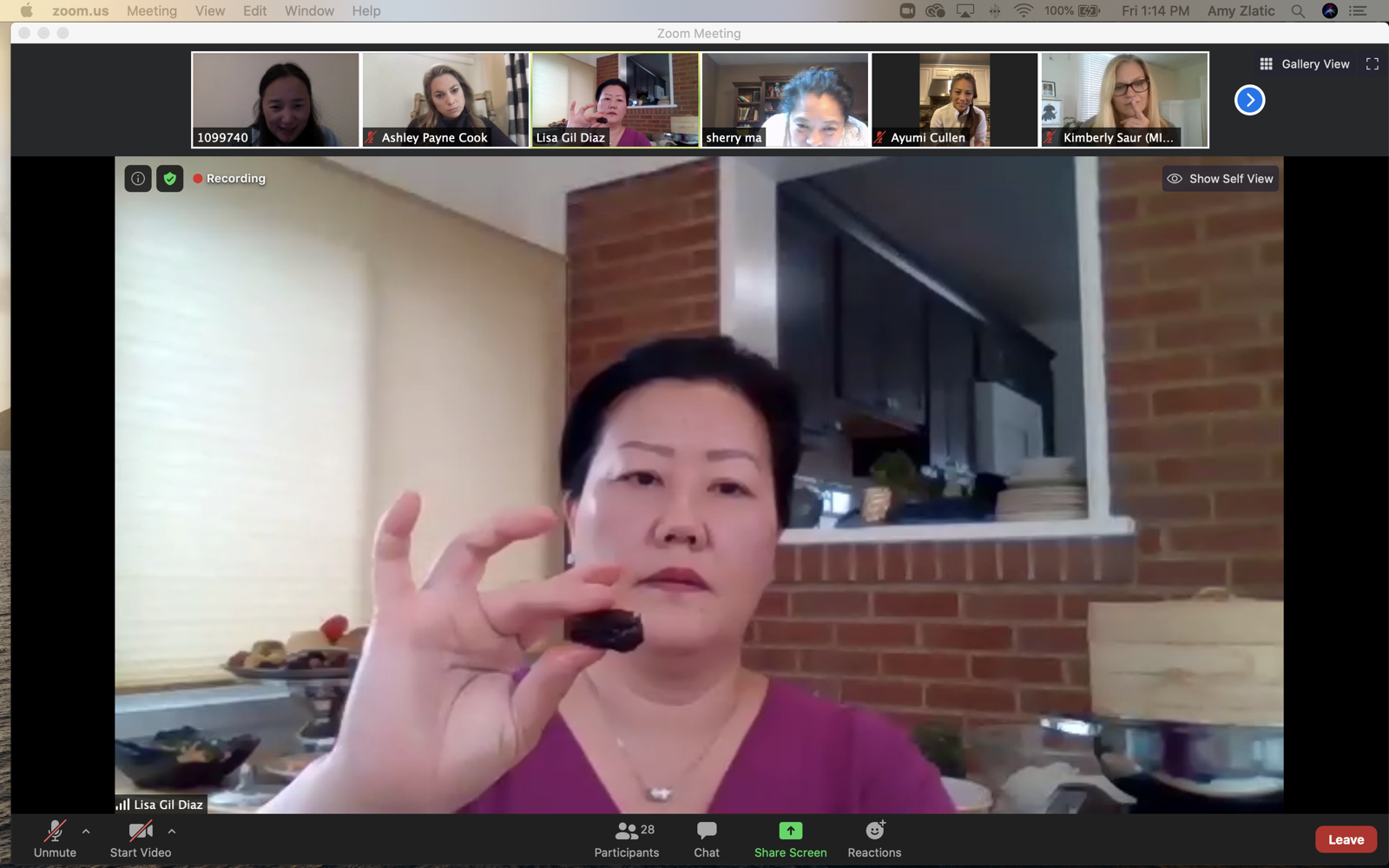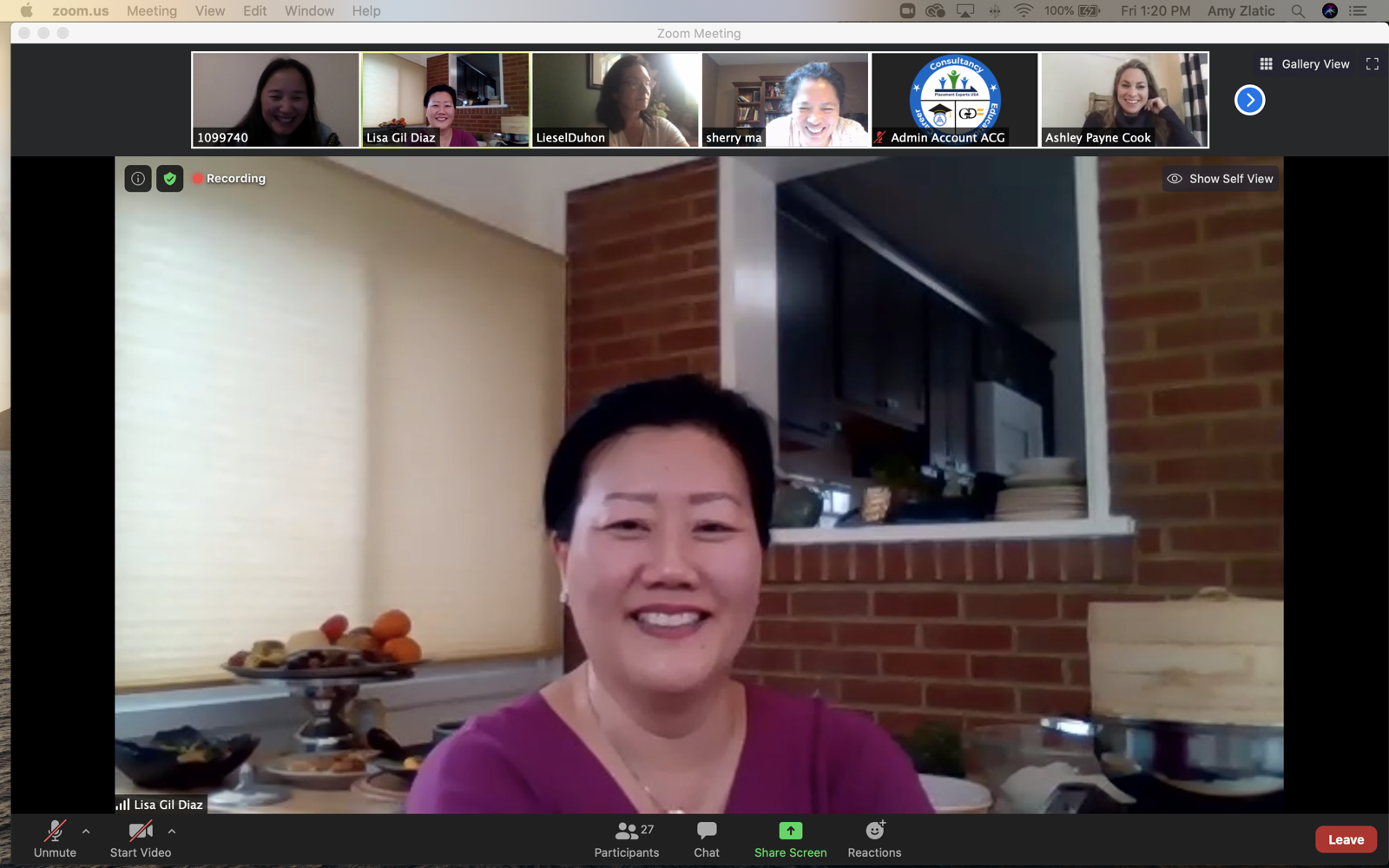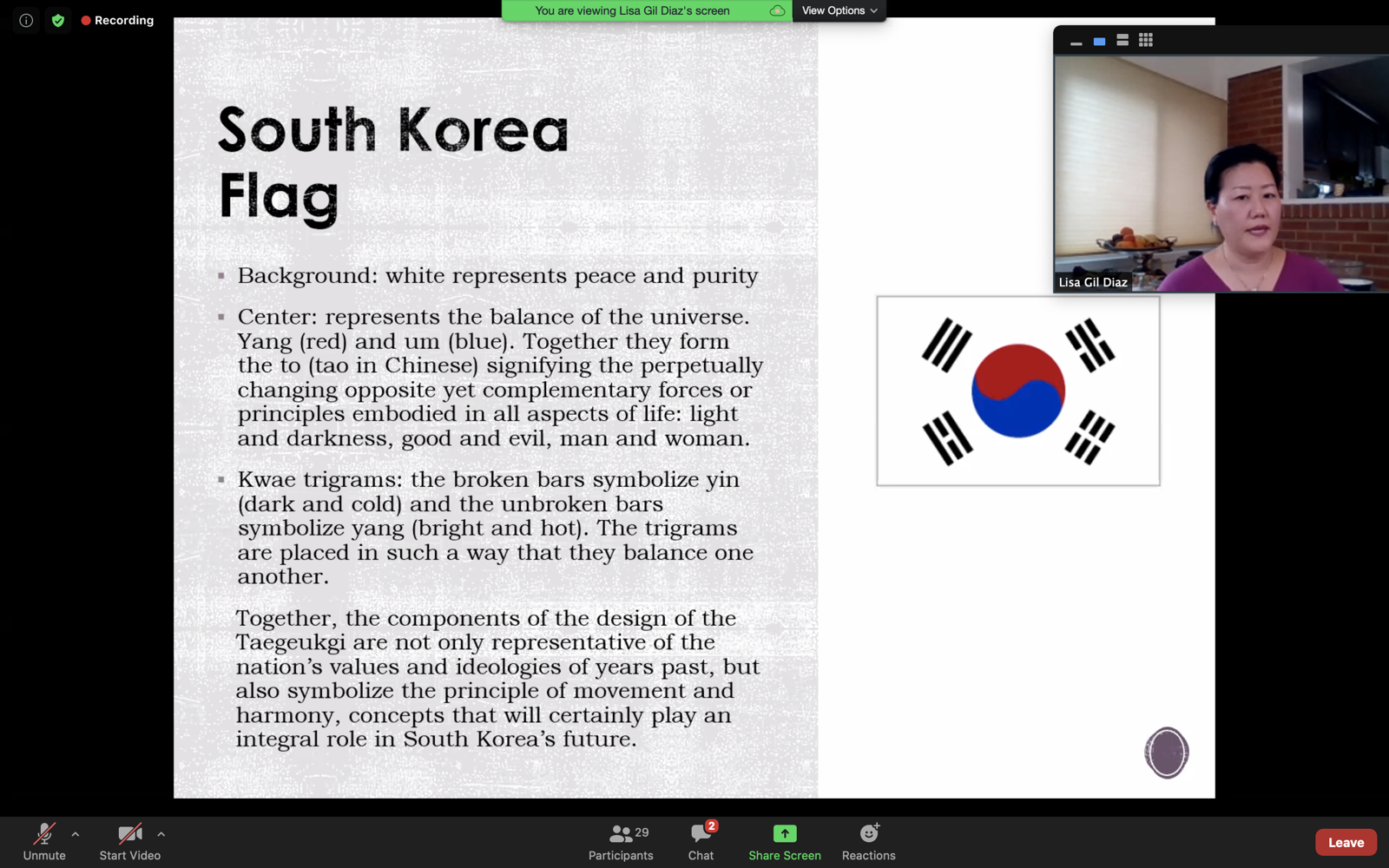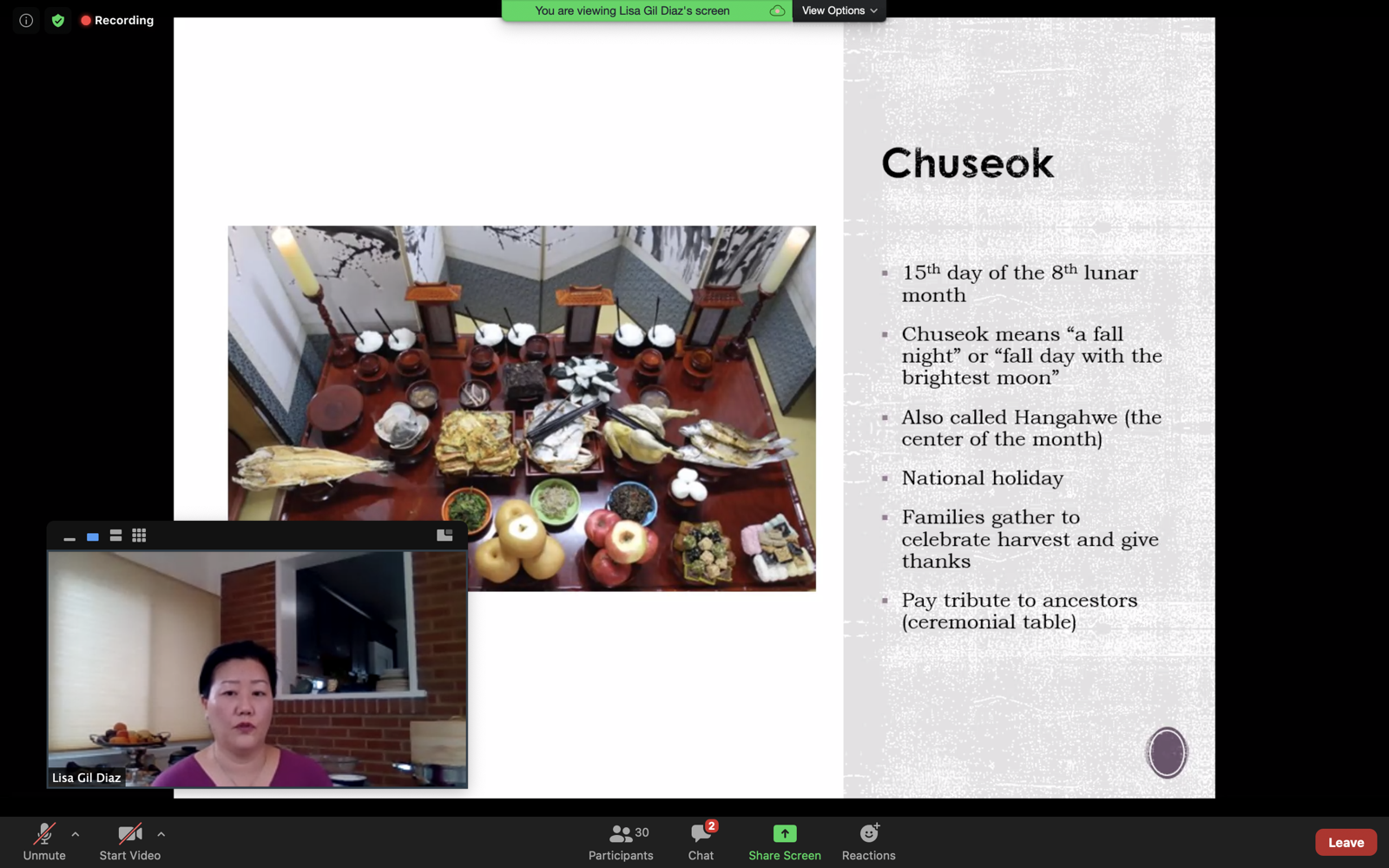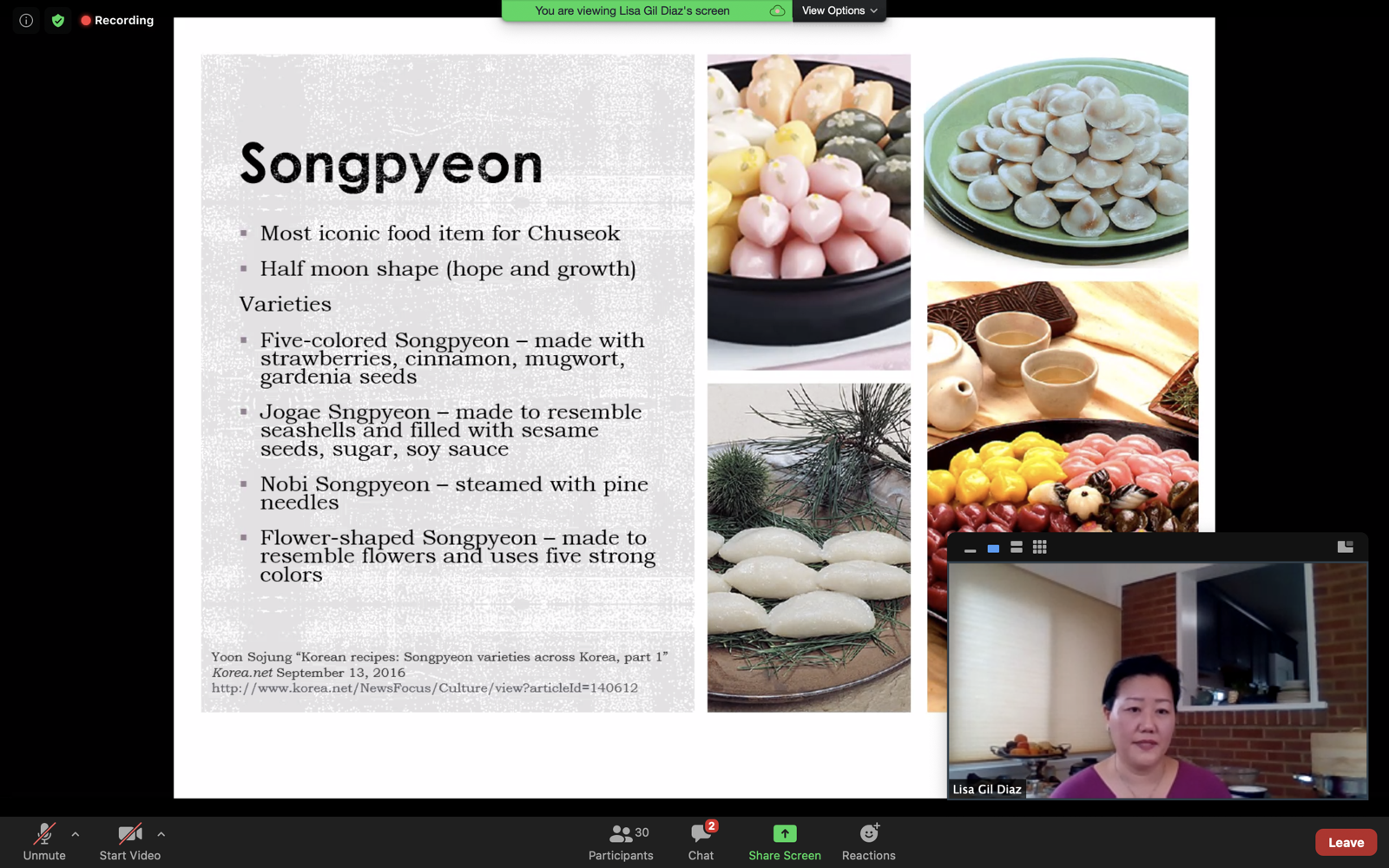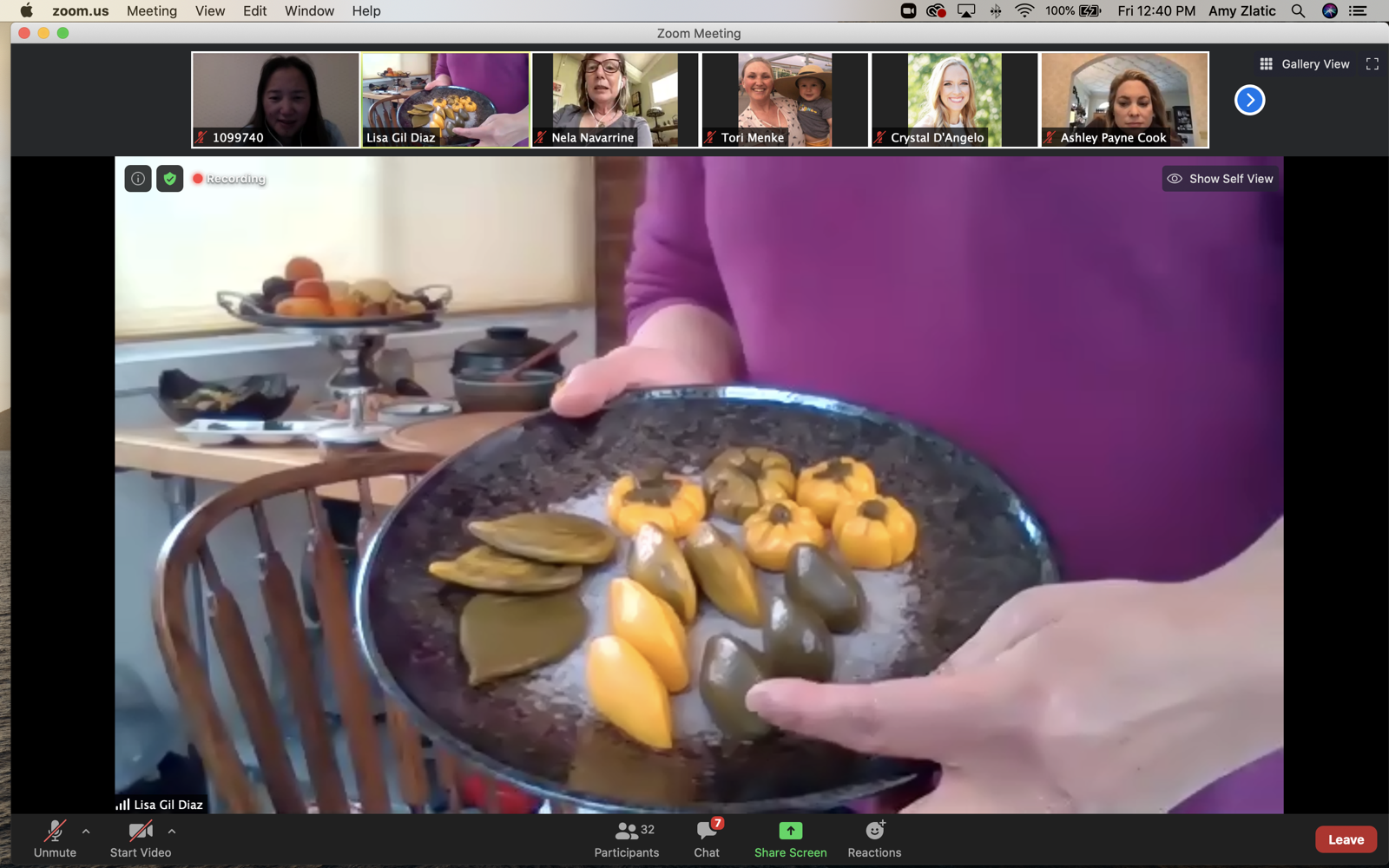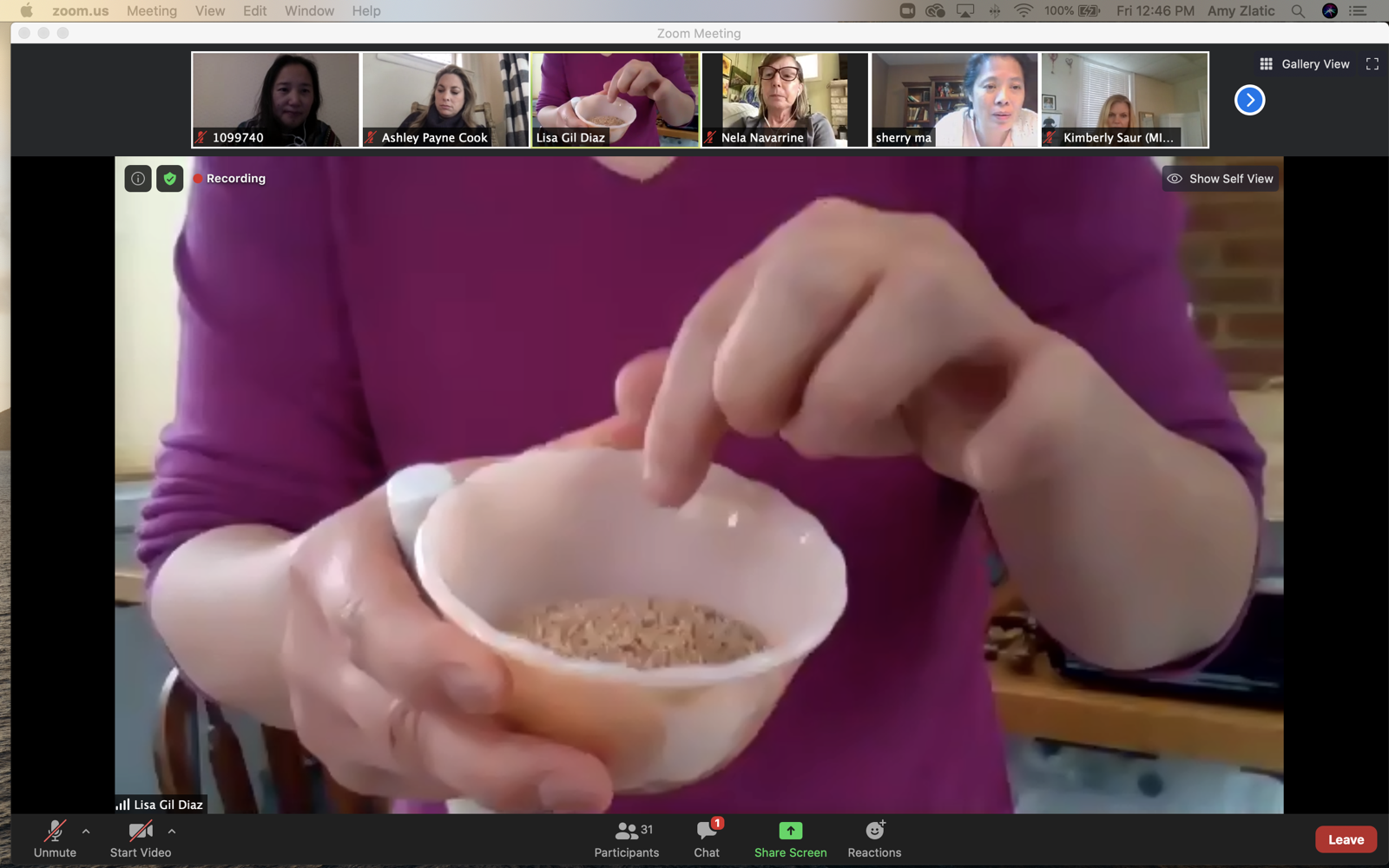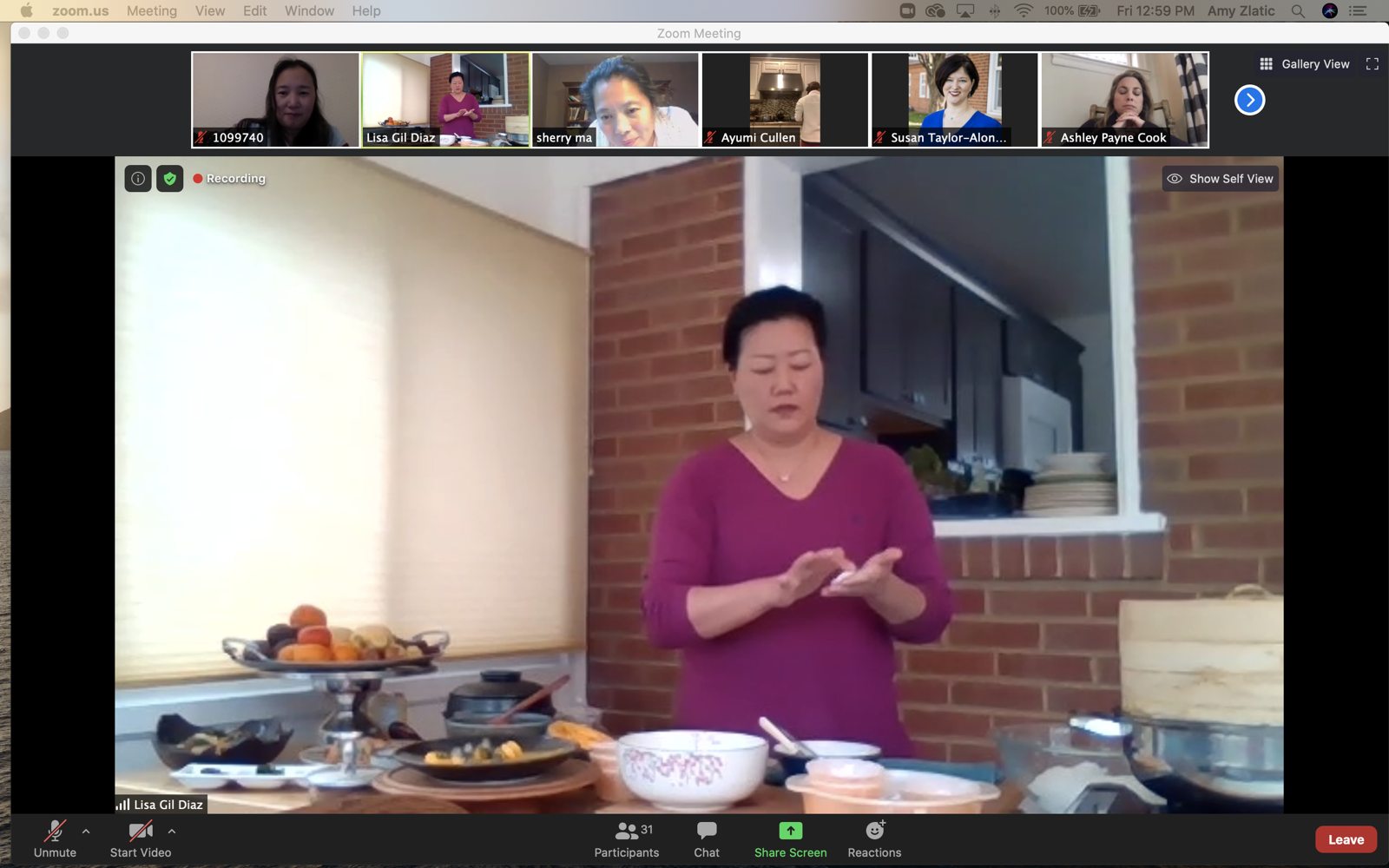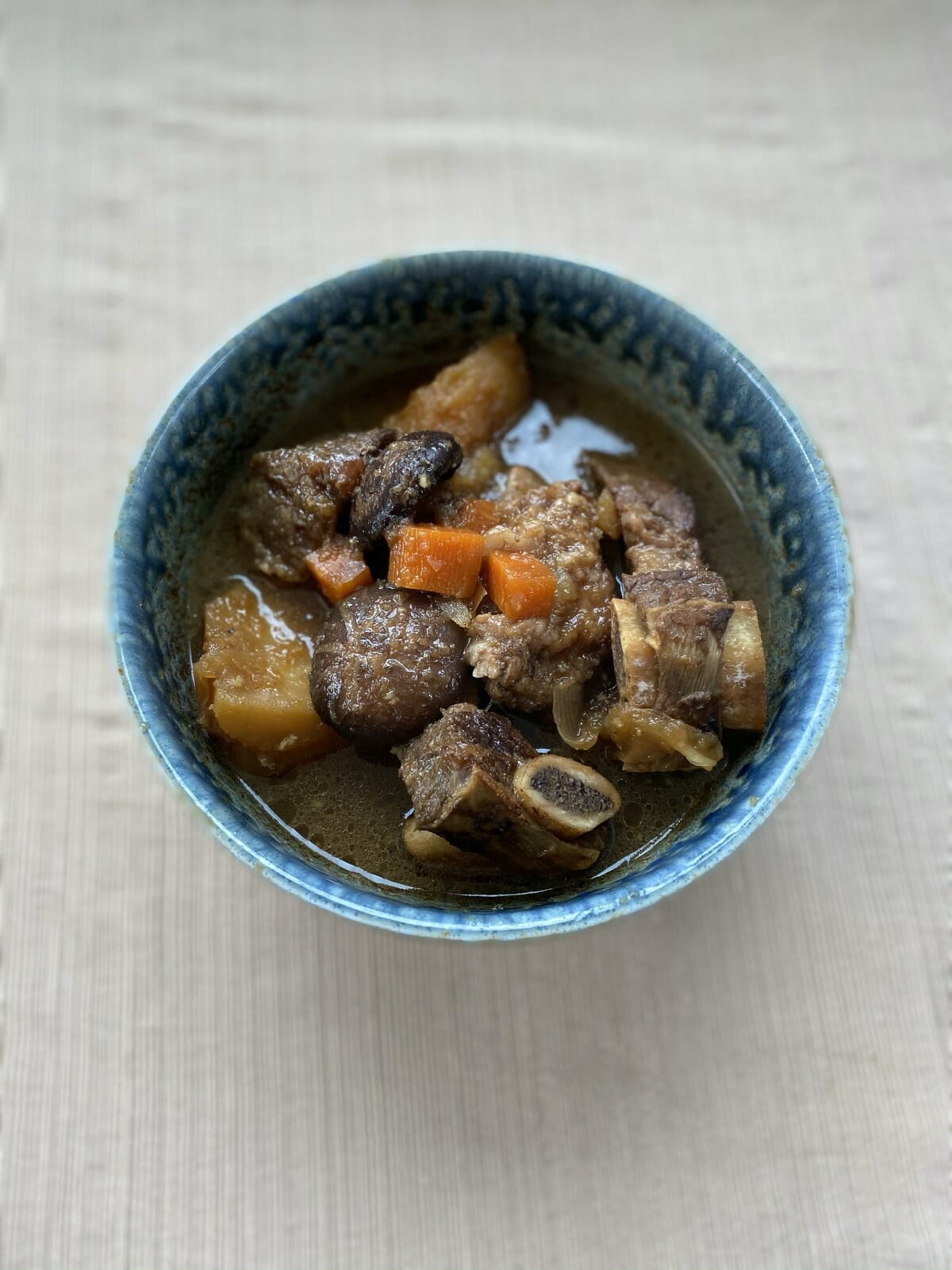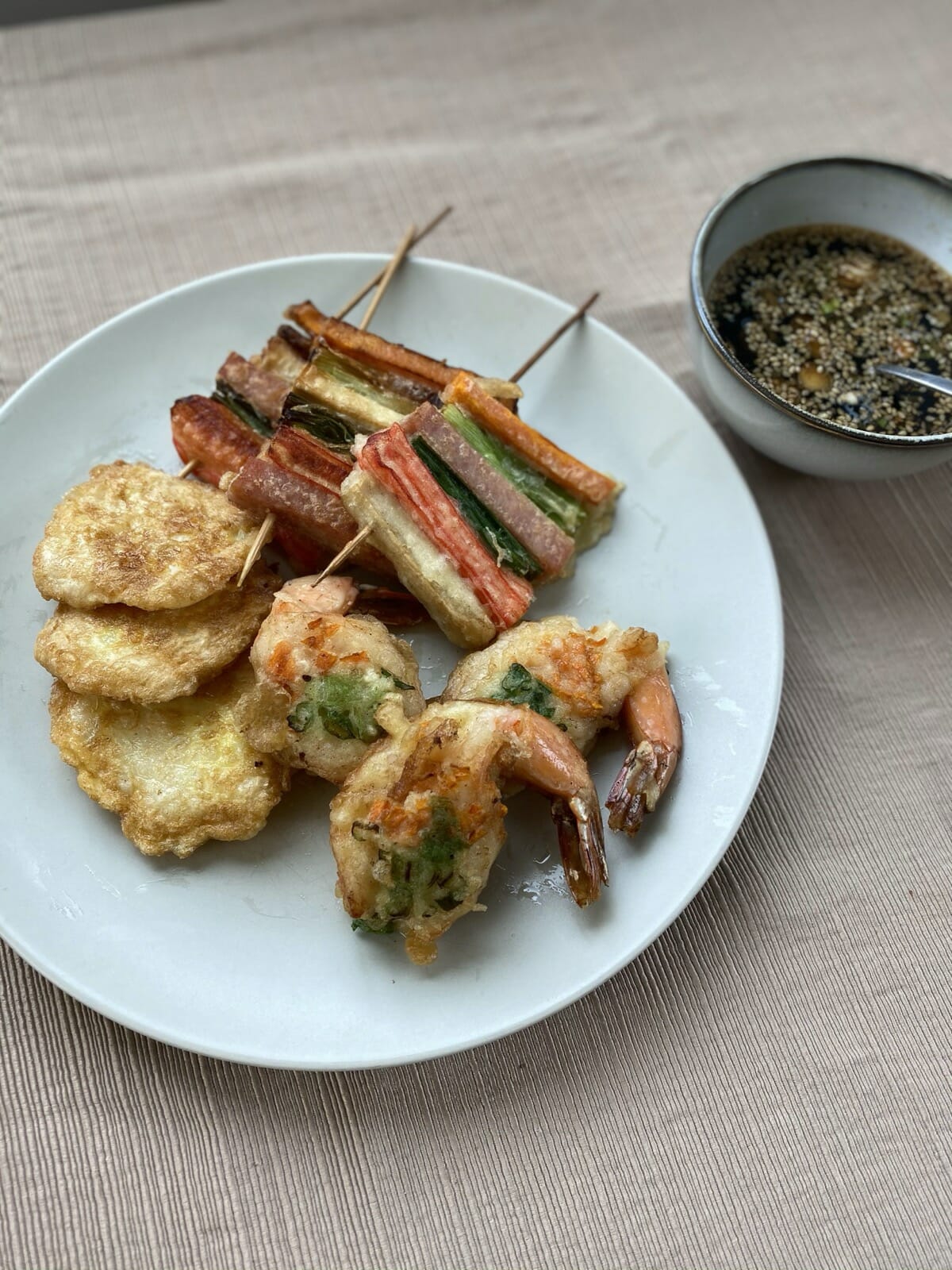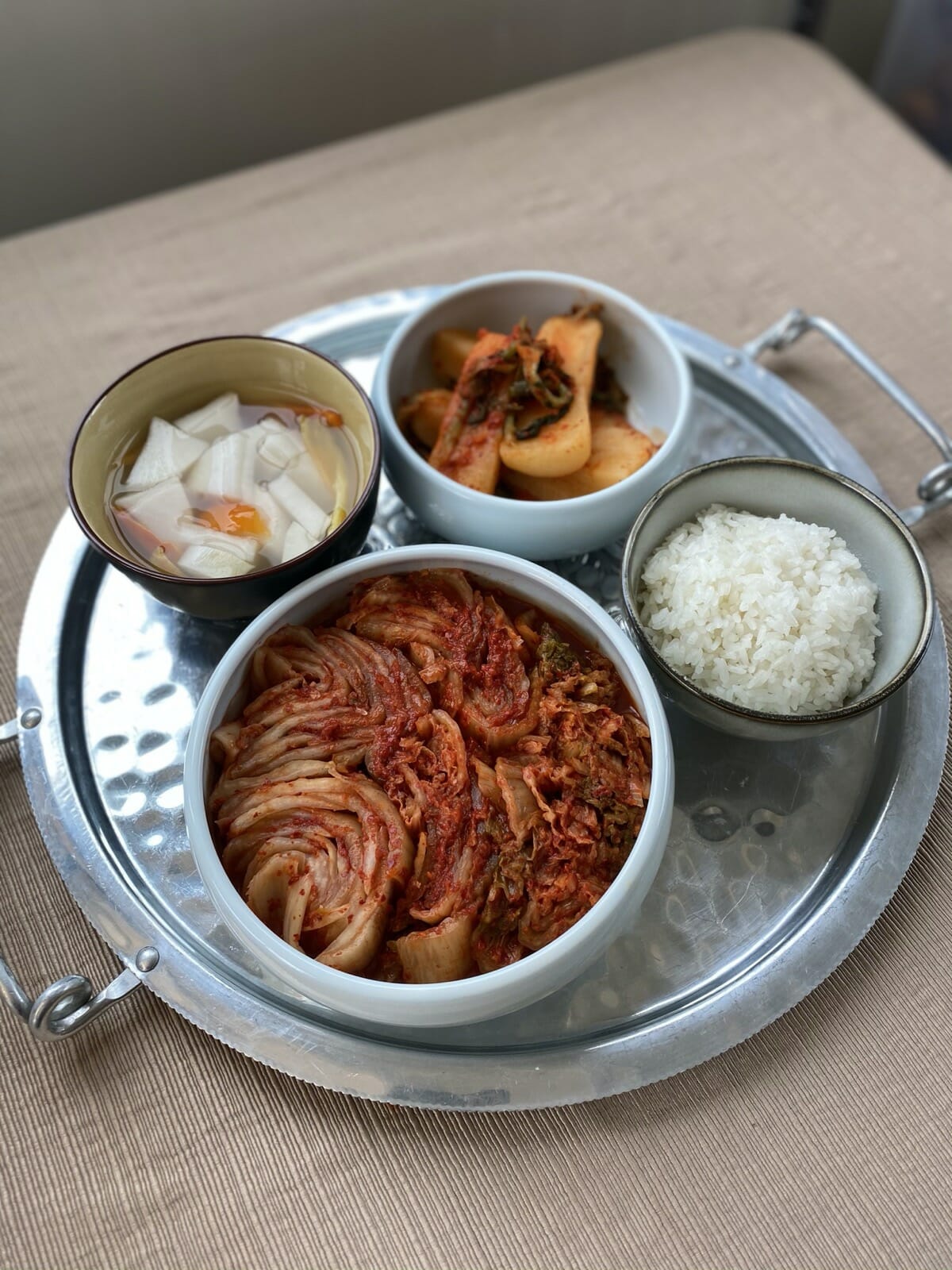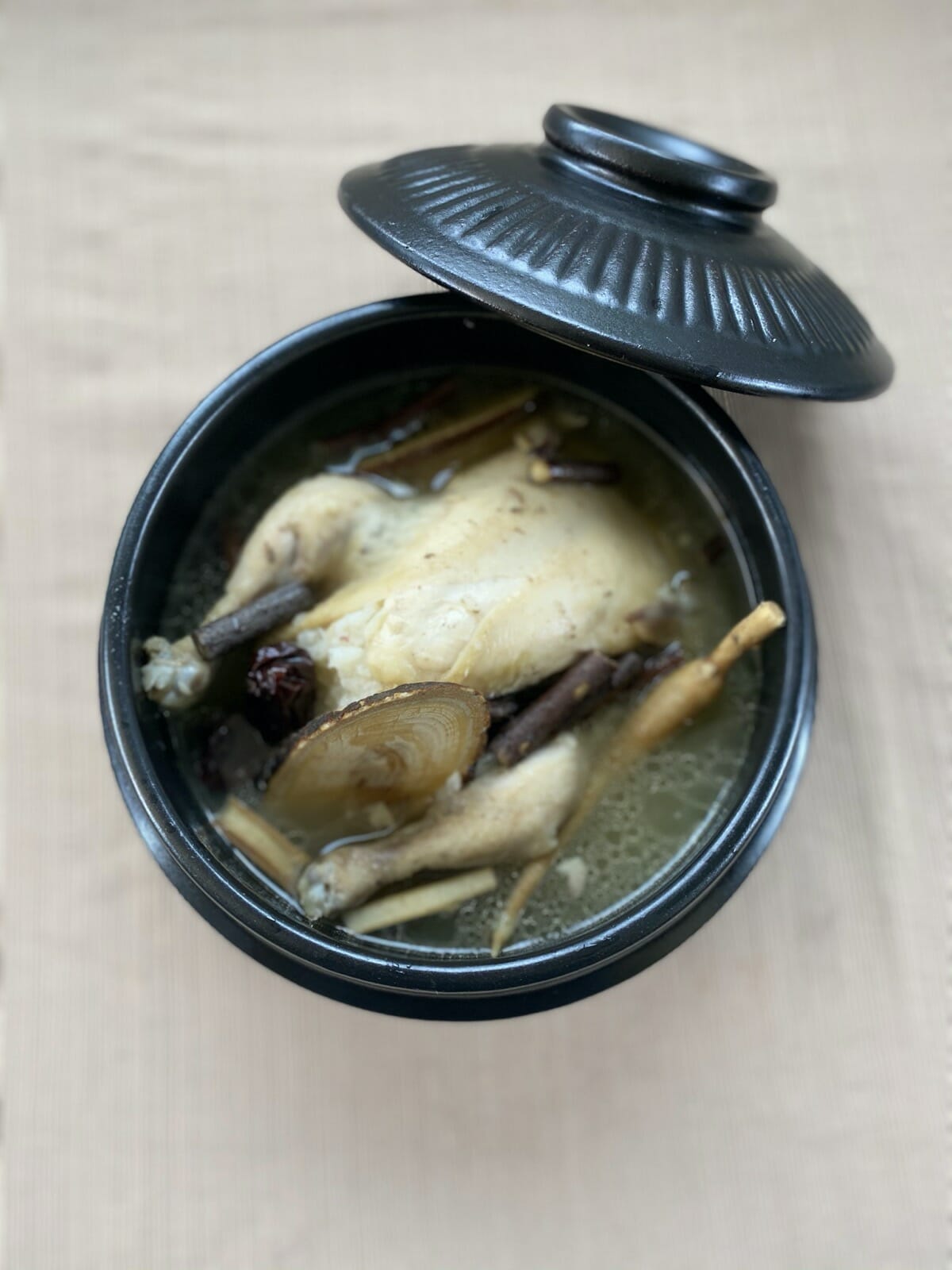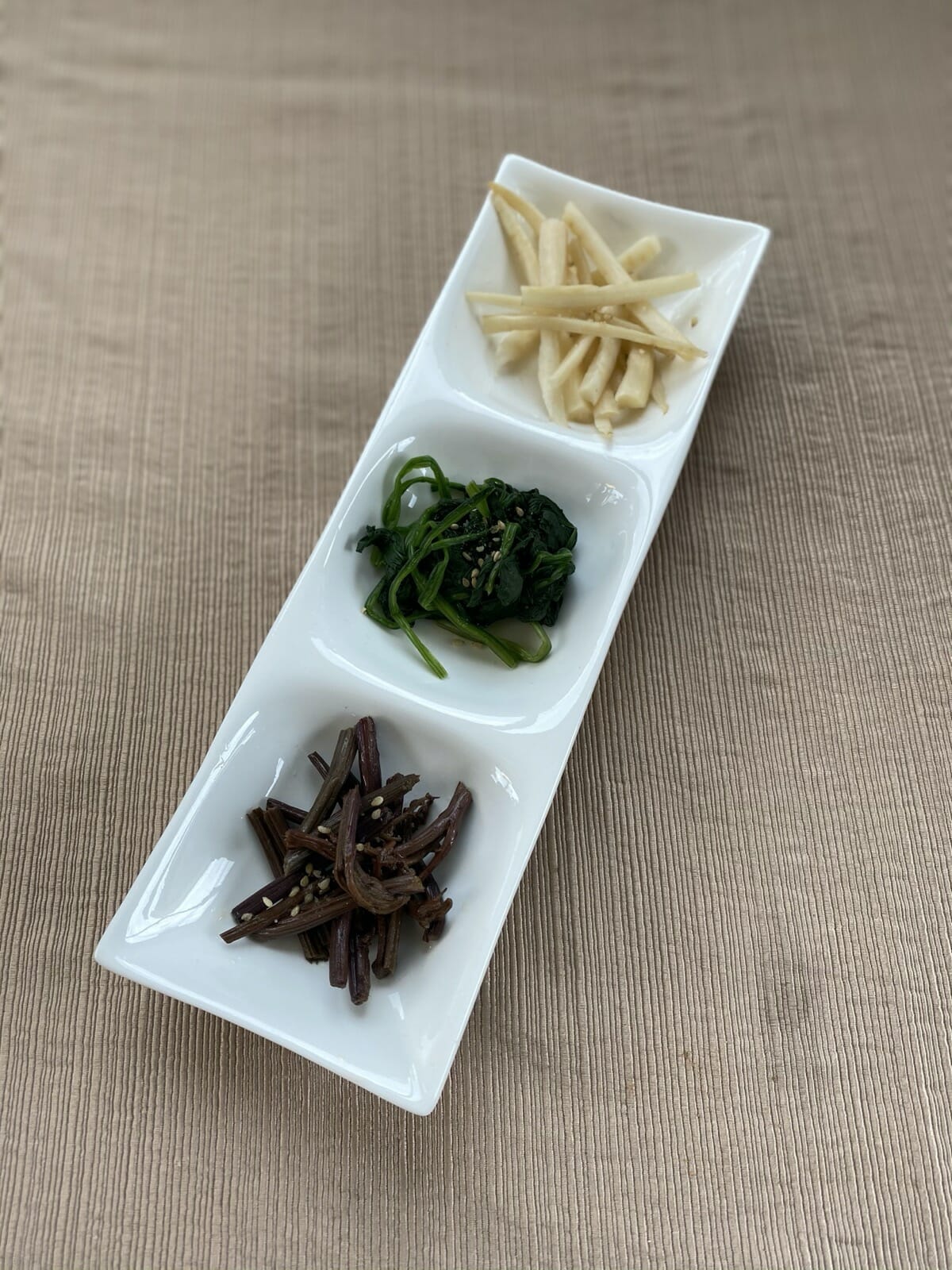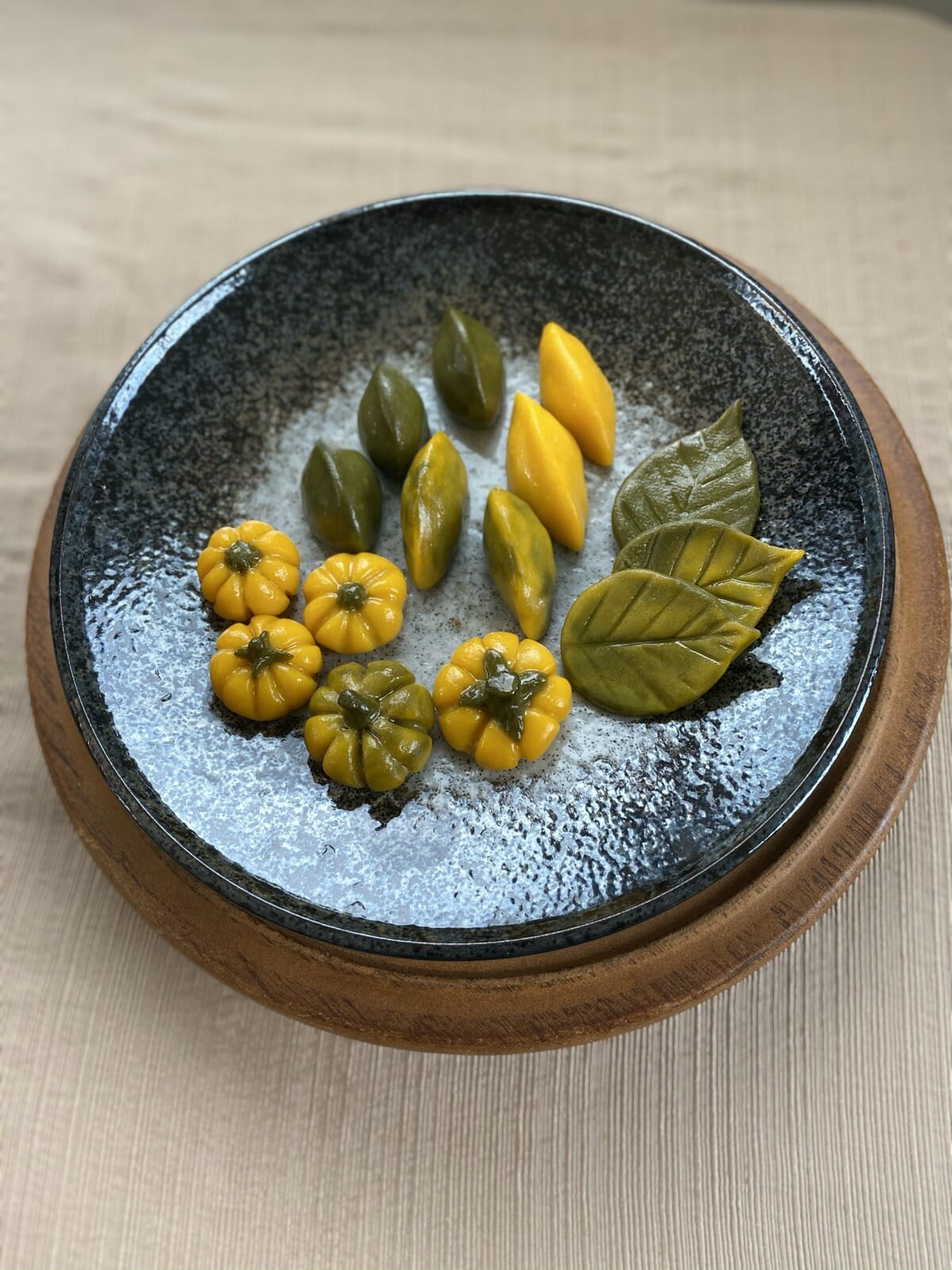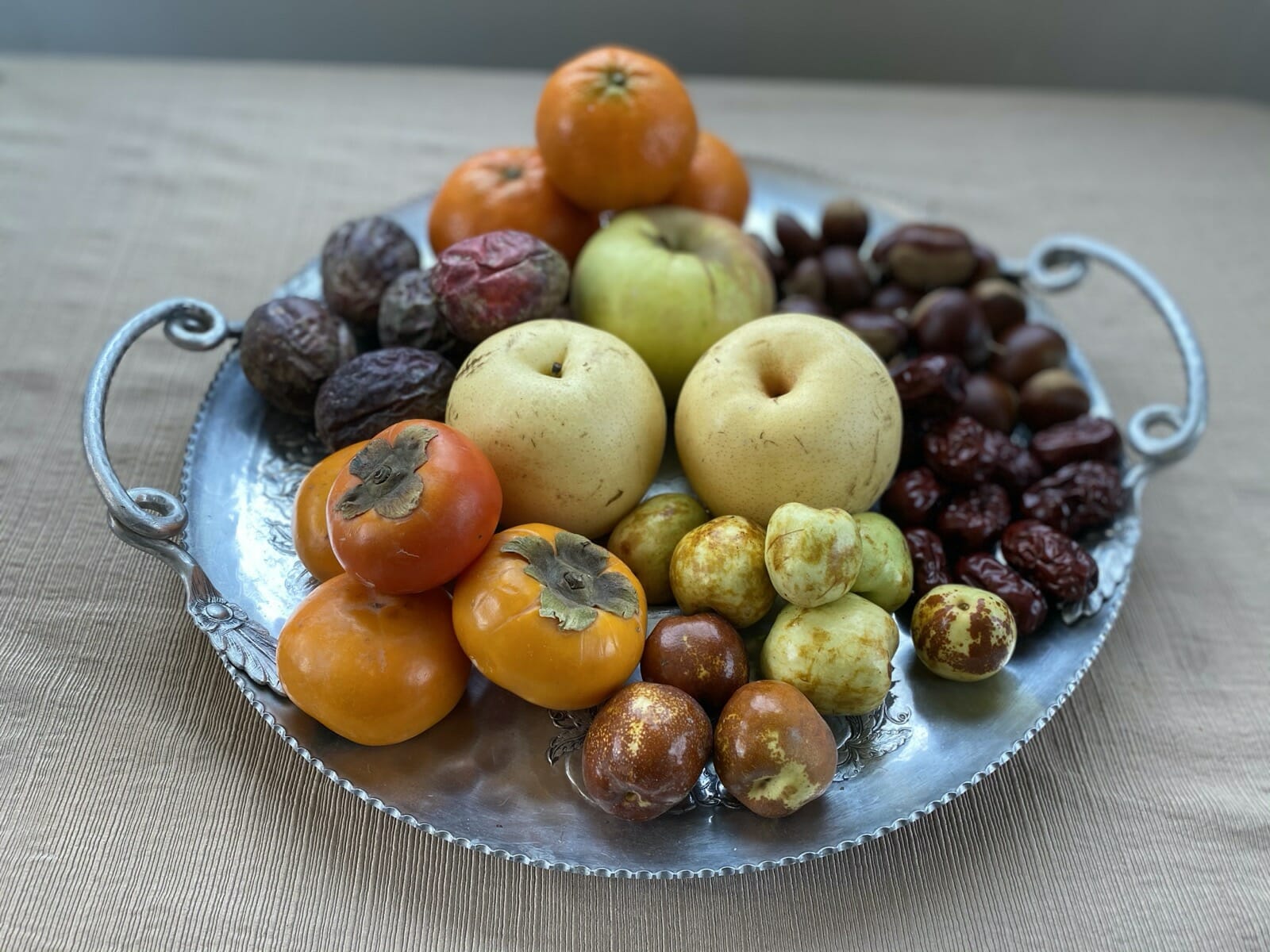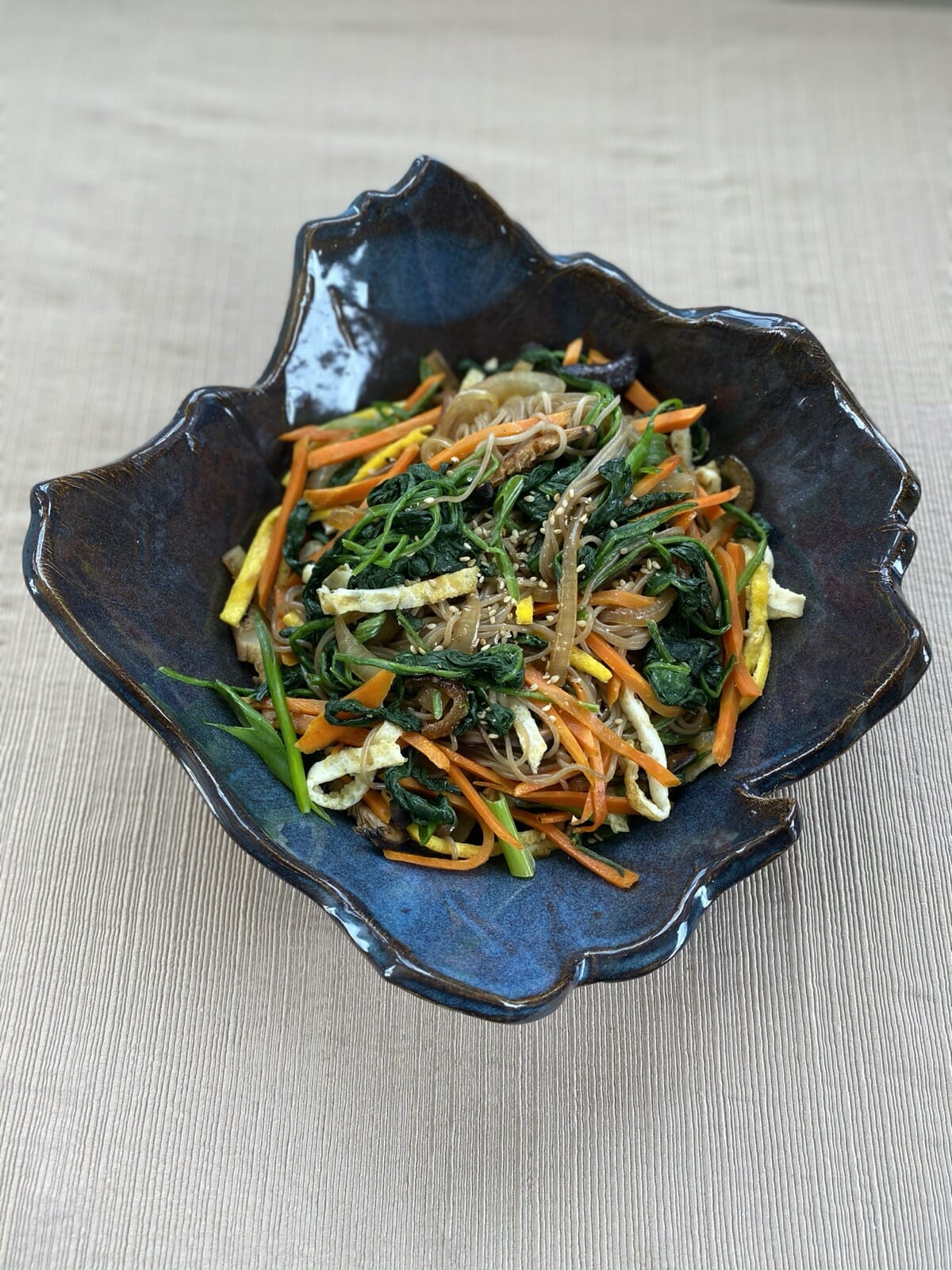The Passport Series took a group of parents over 6,600 miles from St. Louis to Korea this week, as Executive Assistant to the Head of School Lisa Gil Diaz shared information and food from her home country. Parents logged in from their homes while Gil Diaz joined from her kitchen. Parent Ayumi Cullen was set up in her kitchen, ready to try delicious new recipes as Gil Diaz taught. (If you’d like to see the presentation, please watch the video below!)
“Food is life for me,” Gil Diaz said and explained that she would show some highlights of Korea before diving right into the food portion. She said that this is the middle of the 8th Lunar Month in Korea, which is traditionally a time of thanksgiving similar to our own season of gratitude in the United States. Koreans visit distant relatives and there is great celebration. They save certain, special foods to have only at this time of the year, and those foods, specifically some pastries, are what Gil Diaz introduced her audience to after sharing some statistics about the country.
The Korean peninsula lies between China and Japan. Gil Diaz focused on South Korea for her presentation. South Korea’s capital is Seoul, its population is 52 million people, and the native language is Korean, or Hangeul, although English is spoken quite a bit and Western/American culture is prevalent in entertainment and food. She shared that the people of Korea originated in far eastern Russia and southern Asia. The national anthem, Aegukga, was composed in 1935 and officially adopted with the establishment of the government of the Republic of Korea in August 1948. It speaks to the resilient spirit of its people and implores them to stay true to the Korean way. The national flower is the Mugungwha, which translates to “eternal blossom that never fades,” and which many of us know as a Rose of Sharon. Koreans enjoy spending time in nature with activities like hiking and skiing. South Korea is known for its strong gaming culture and they dominate the e-sports industry worldwide. A popular vacation destination is Jeju Island, the Korean Hawaii if you will, and much of the world certainly knows the country’s most popular K-pop band: BTS, a seven-member South Korean boy band that has become quite popular here in the United States. The most iconic Korean food, Gil Diaz said, is kimchi, and she explained that there are more than 100 different types and that it was originally not made with spice. “Chili spice didn’t enter Korea until the 1500s,” she said.
Gil Diaz then showed the South Korean flag and explained the symbolism behind it, which includes a white background to represent peace and purity, a center of red (Yang) and blue (Um) that represents the balance of the universe and that together form the “to,” signifying the perpetually changing opposite yet complementary forces or principles embodied in all aspects of life such as light and darkness, good and evil, and man and woman. There are Kwae trigrams, where broken bars symbolize yin (dark and cold) and the unbroken bars symbolize yang (bright and hot). The trigrams are placed in such a way that they balance one another.
Together, the components of the design of the Taegeukgi are not only representative of the nation’s values and ideologies of years past, but also symbolize the principle of movement and harmony, concepts that will certainly play an integral role in South Korea’s future.
Gil Diaz then dove into the season of thanksgiving around Chuseok, which means “a fall night” or “fall day with the brightest moon.” It’s a national, three-day holiday that allows Koreans to use the days before and after to travel in order for families to gather and prepare for the special meal and ceremonial table. To pay tribute to ancestors, Koreans follow specific rules that detail precisely how a ceremonial table is set. For instance, the fish’s head is always to the east and its tail to the west.
The most iconic food for Chuseok is Songpyeon, which is a pastry generally made with rice powder dough and stuffed with ingredients such as chestnuts, beans, jujubes, or sesame seeds. The best-known variety is made in a half-moon shape that symbolizes hope and growth. Gil Diaz shared a few varieties of Songpyeon from various provinces in Korea:
- Five-colored Songyeon – made with strawberries, cinnamon, mugwort, and gardenia seeds
- Jogea Songpyeon – made to resemble seashells and filled with sesame seeds, sugar, and soy sauce
- Nobi Songpyeon – steamed with pine needles (Gil Diaz shared a story from when she was about ten years old of her mother finding a downed pine limb and dragging it home to use the needles to make Songpyeon. “My brother and I were mortified,” she laughed. “And we walked really far behind her. Now I get it!”)
- Flower-shaped Songpyeon – made to resemble flowers and uses five strong colors
- Gamja Songpyeon – made with potato starch powder and filled with red beans or beans, has a unique handprint shape
- Mosi Songpyeon – made from boiled ramie leaves, rice powder dough and filled with beans, red beans, chestnuts, jujubes, and sesame seeds
- Hobak Songpyeon – made from pumpkin powder which naturally colors it yellow
Lisa showed off some Songpyeon she made before doing a demonstration on how to create them. She talked about the kind of rice flour to use, and adding hot water instead of cold as it gives a different texture. “It might be freaking some people out that I’m not measuring, but it’s okay,” she said. She shared different techniques, including that she uses her left hand to mix because she is right-handed and tends to be too forceful when using her dominant hand. Her instructions were helpful, as she guided viewers through what to look for in regards to texture and offering little tips and tricks along the way. For instance, she advises using a damp paper towel or cheesecloth to cover the formed Songpyeon as you continue making them, to keep the dough from drying out while letting it rest. Gil Diaz showed the audience how to make the traditional half-moon shape, along with special pumpkin- and leaf-shaped Songpyeon. Once all the Songpyeon are made, place them into a steamer between layers of wet paper liners or pine needles and steam for 20-30 minutes. When they are cooked, remove them from the steamer and shock them in a bowl of cold water for a few minutes. Drain and brush or gently toss with sesame oil.
Gil Diaz showed off her own Chuseok dinner table, which featured rice; lots of different kinds of kimchi (“Kimchi is like seafood,” she advises. “If it smells bad, it’s not good!”); galbi jjim, a dish that is kind of like an American stew that features beef short rib, garlic, onions, mushrooms, and potatoes in a rich broth (at this point several audience members’ mouths were watering); and samgyetang, a chicken soup that features a young chicken stuffed with sweet rice and a broth flavored and enriched with garlic, ginger, jujubes, ginseng, vetch and angelica roots, chestnuts, and mulberry tree bark. She also showed off side dishes typical of the holiday and stressed that when preparing a meal it’s important to consider colors (esthetics) in addition to nutrition and taste. There’s usually a fruit spread, too, and Korean hosts are known for their generosity offering their guests foods made with the highest quality ingredients. Finally, Gil Diaz spoke about a traditional cookie that comes in three or four varieties, including a no-bake recipe she likes.
After her formal presentation, the call turned into an animated sharing between all of where to find good local Korean cuisine and ingredients. It was clear that the guests had a wonderful time at Lisa Gil Diaz’s virtual table and learned much about some of the rich traditions of Korea.
